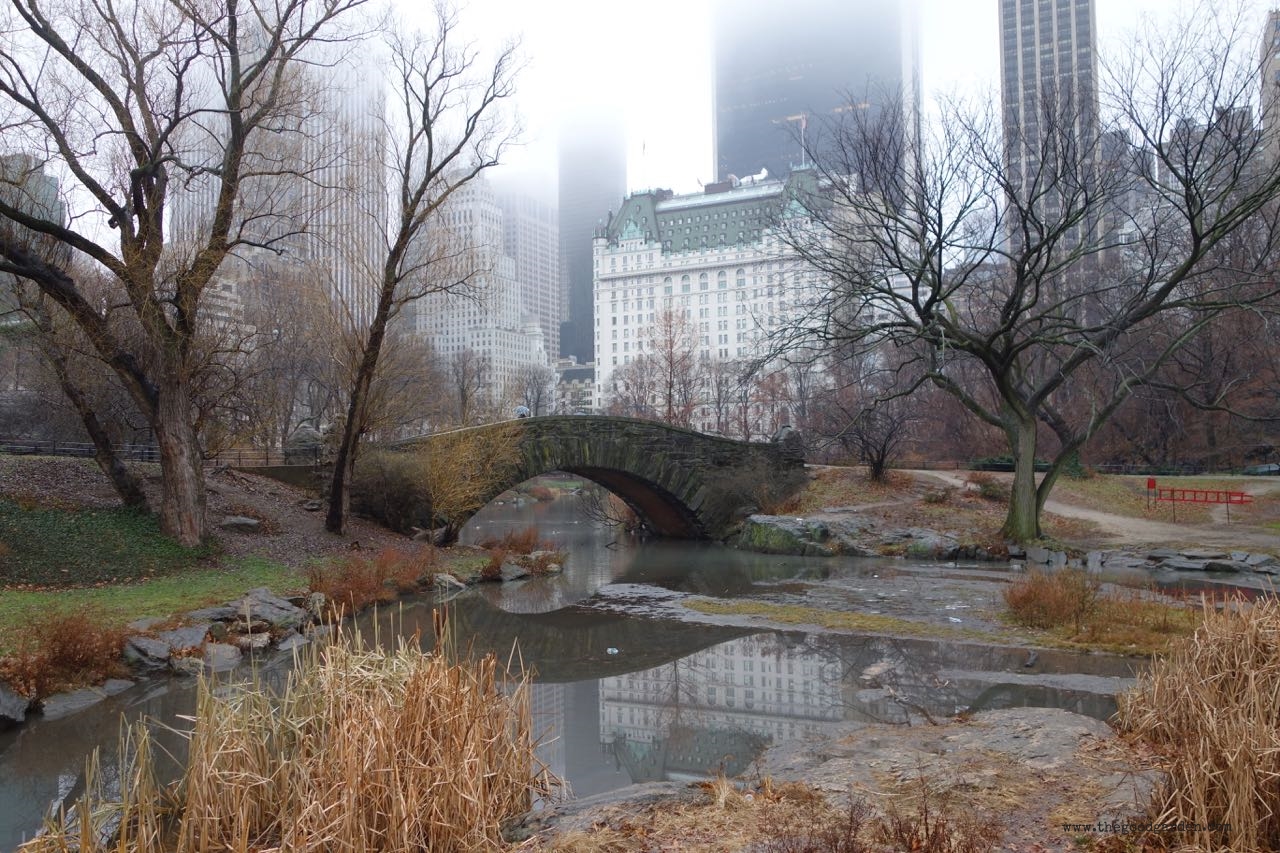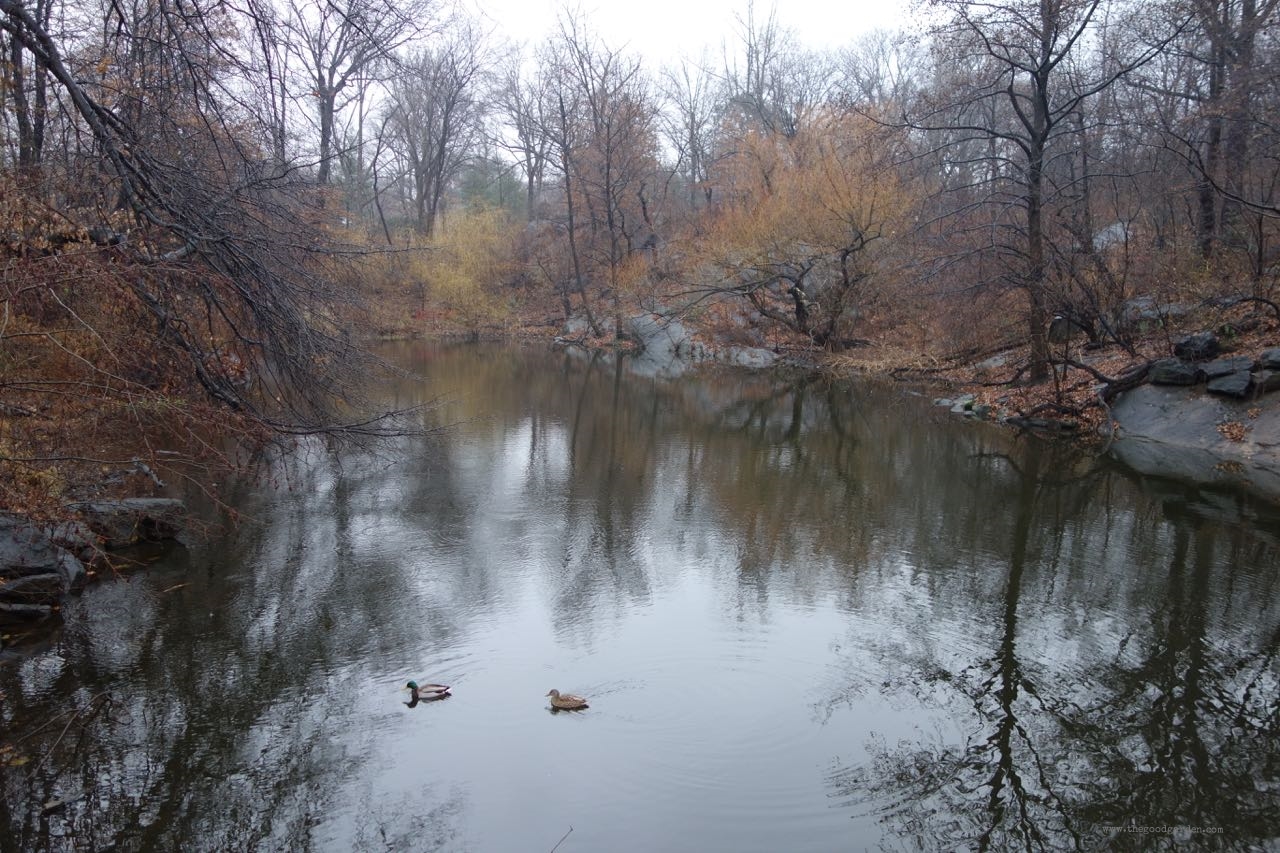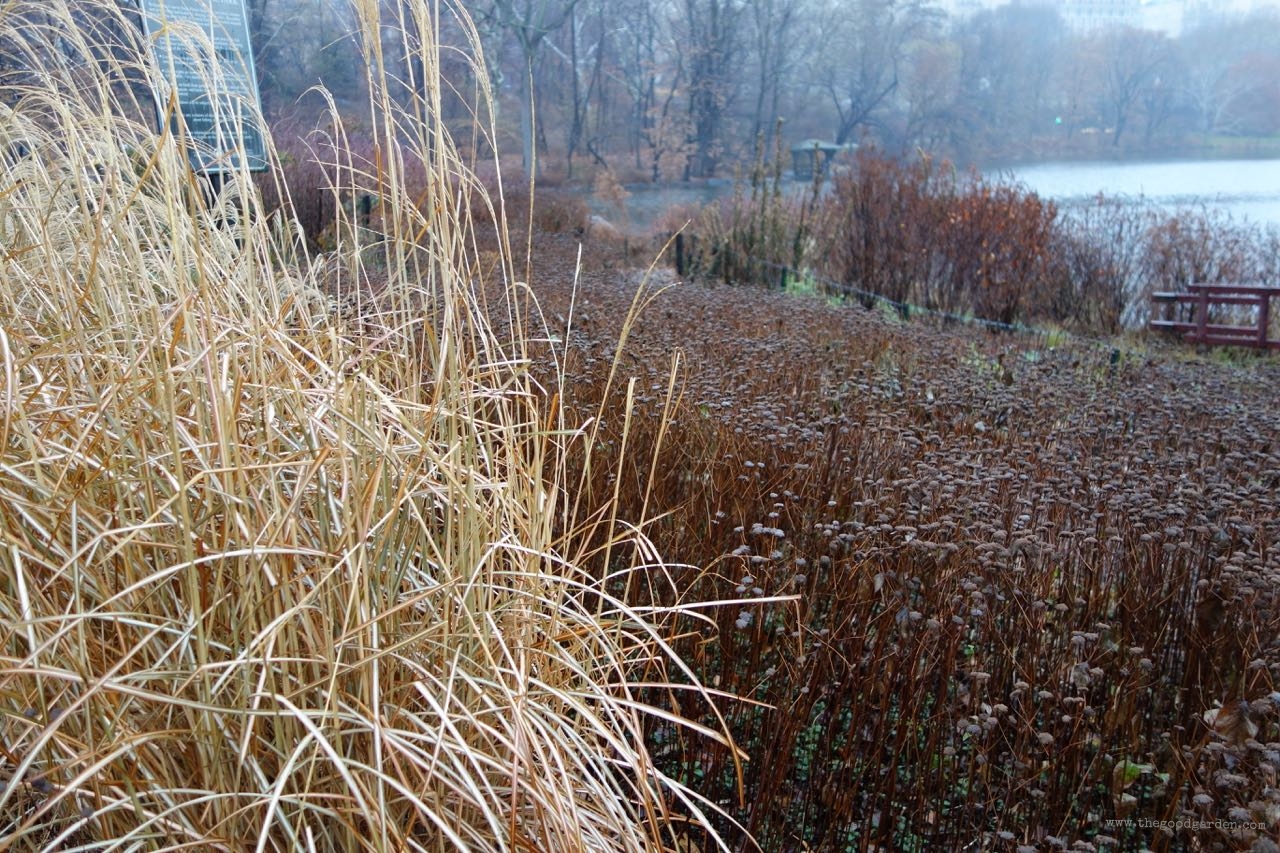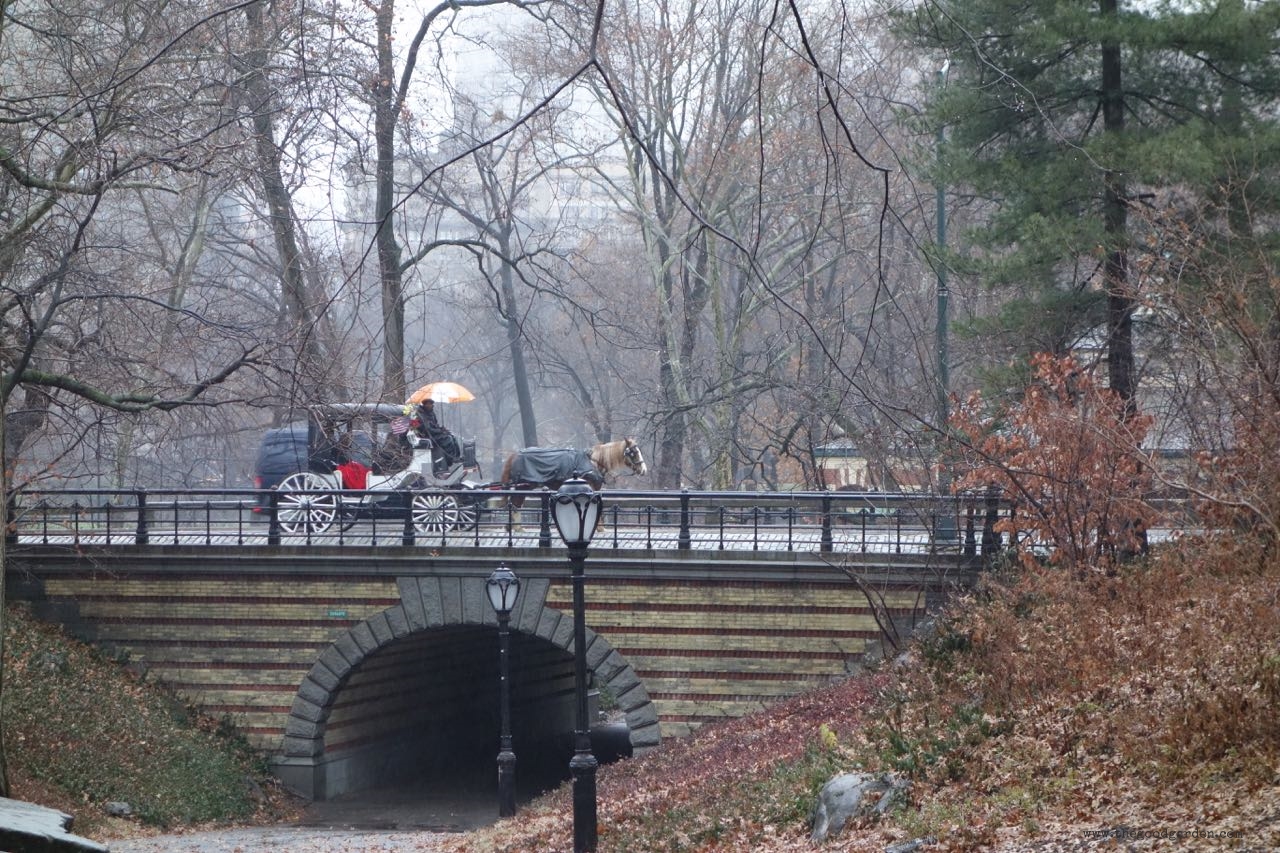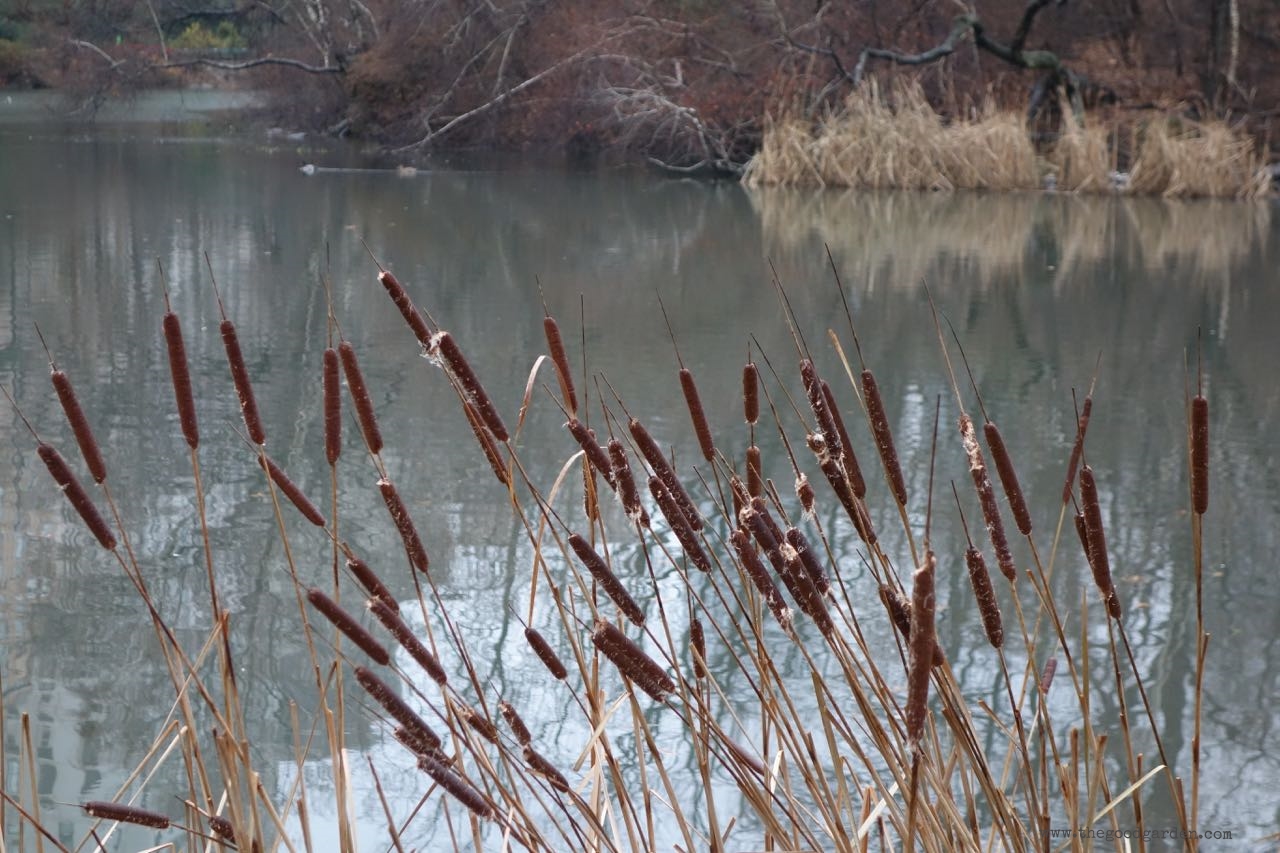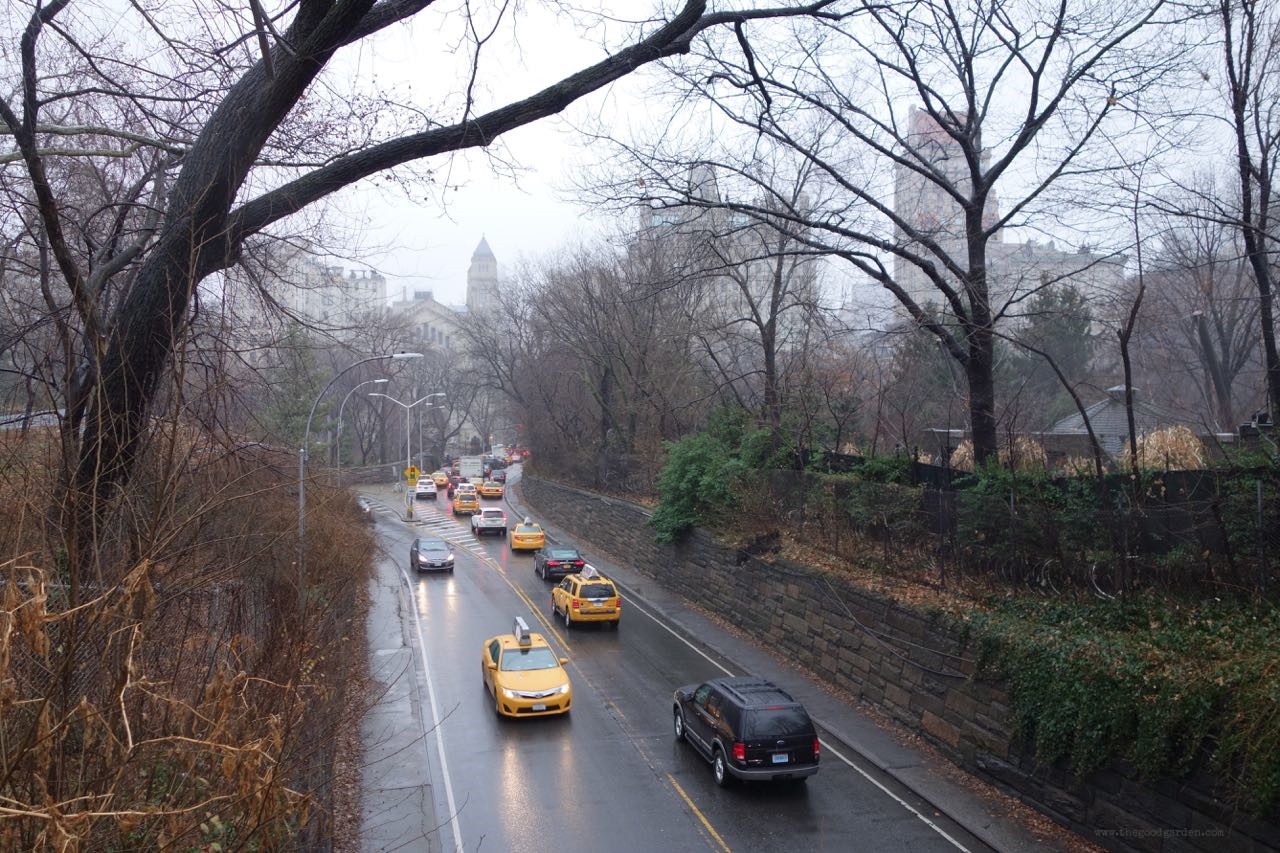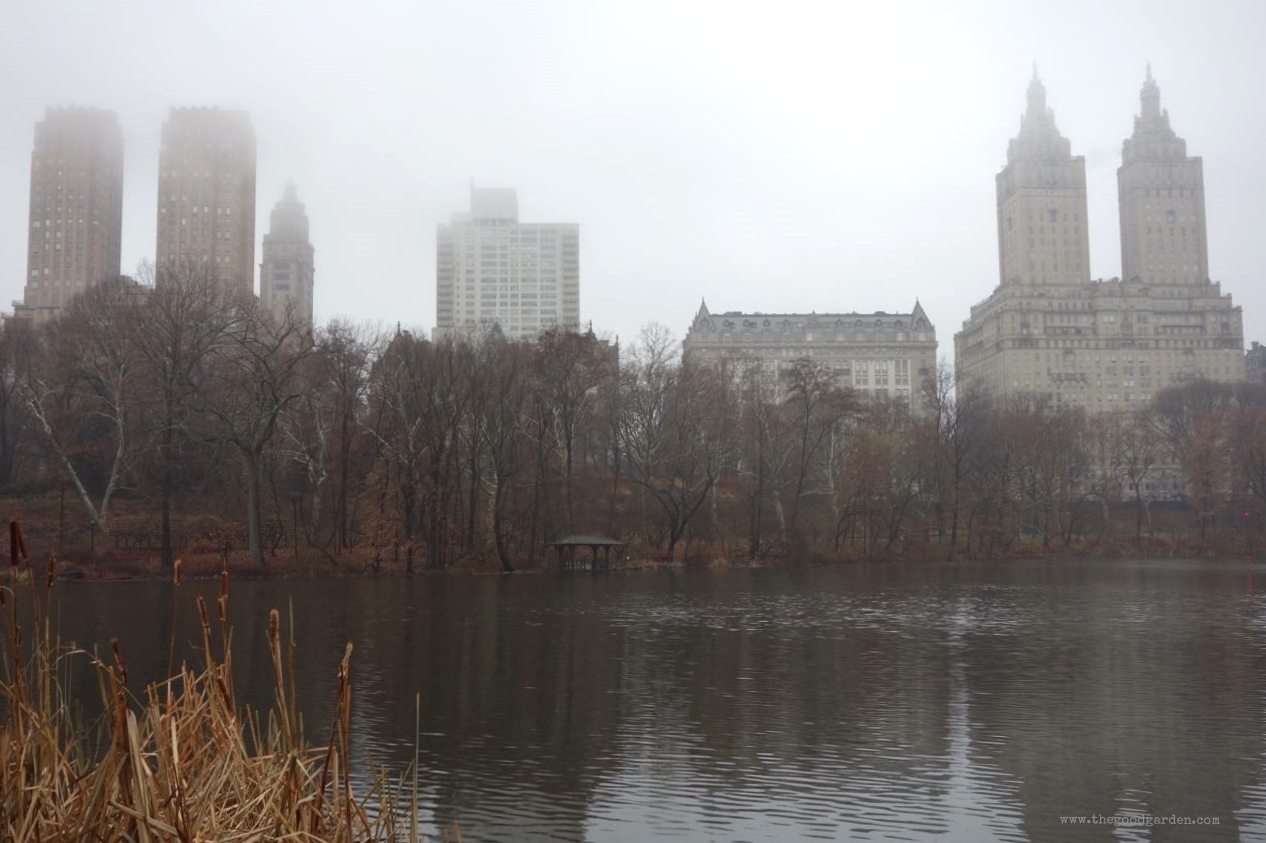I recently had the chance to visit family and friends in New York City. One rainy day I found myself with morning appointments on the West Side of Manhattan and afternoon appointments on the East Side. To native New Yorkers, this triggers immediate anxiety as to the best way to get from one side to the other. Though Central Park is only .5 mile wide (.8 km), there is no direct route across the park, and at peak times it can take an hour to make the journey. I was thrilled to have an excuse and the time to walk across the park. As so many recent posts have been about formal gardens, I was curious to experience the completely different, picturesque style of Central Park.
“Picturesque” names a style in which garden designers created gardens in the image of idyllic European landscape paintings. Famous examples of these paintings were by Nicolas Poussin and Claude Lorraine, who painted scenes of the Italian countryside in the 1600’s. Their art reflected changing philosophy toward nature and wilderness. In Europe, the first gardens made in this style date from the early 1700’s. This romantic style became popular under the influence of British designers such as William Kent, Capability Brown, and Humphrey Repton. Repton in particular, adapted the style to smaller gardens, making it more accessible to the middle class.
In 1800’s America, garden designers were heavily influenced by Europe. And the Hudson River School of painting captured the natural beauty of the American continent, further encouraging the popularity of the “picturesque.” One of its most famous executions is New York’s Central Park.
Central Park was designed in 1857 by the Englishman Calvert Vaux and the American Frederick Law Olmstead. Their winning Greensward plan submerged the busy cross streets that connect the east and west sides of New York, and created several naturalistic lakes. Both are featured in the photos above.
In Olmstead and Vaux’s proposal: “…Each of the transverse roads is intended to be sunk so far below the general surface that the park drives may, at every necessary point of intersection, be carried entirely over it, without any obvious elevation… a little judicious planting on the tops… of the banks will… entirely conceal both the roads and the vehicles… from the view of those walking… in the park.”
Regarding a lake at the southeast corner of the park: “…it is proposed to form a lake of irregular shape… by introducing such an ornamental sheet of water… the picturesque effect of the bold bluffs that will run down to its edge and overhang it, must be much increased.”
At times while walking through the park last week I felt that I was wandering through a nature preserve far from an urban center. In reality I was in an entirely man-made environment: lakes, rivers, trees all placed by hand. Only the tall buildings that emerged now and again through the fog reminded me where I really was.
If you can find yourself in NYC soon, the original pen and ink Greensward Plan map is on display at the City Museum of New York through the end of January 2015. Call ahead to confirm details.

